Notes on Scuba Diving in Thailand (and Elsewhere) for the Non-Amphibious
When I was about five years old I had a dream. It was one of the very few I ever remembered after waking up and is probably the only one I still remember vividly 30 or so years after it was dreamt. I’ll spare you the details, as dreams are generally of little interest to anyone but the dreamers themselves. I will, however, provide a relevant synopsis.
I’m under water, deep under the sea in a zoo of some sort. There is air to breathe, as the zoo is in a handy protective bubble. Then there’s an announcement over the PA system, casually noting that the air supply will finish in X minutes, thank you for visiting, have a nice day. My 5 year old somnambulant brain made the quick calculations and realized, in a fatalistic and resigned way that only 5 year olds can pull off, that the air would run out before I would be able to ascend to the surface as ascending takes Y minutes and the air would be all gone by X. I sat down on a bench and waited for my fate.
I didn’t care much for deep water after that.
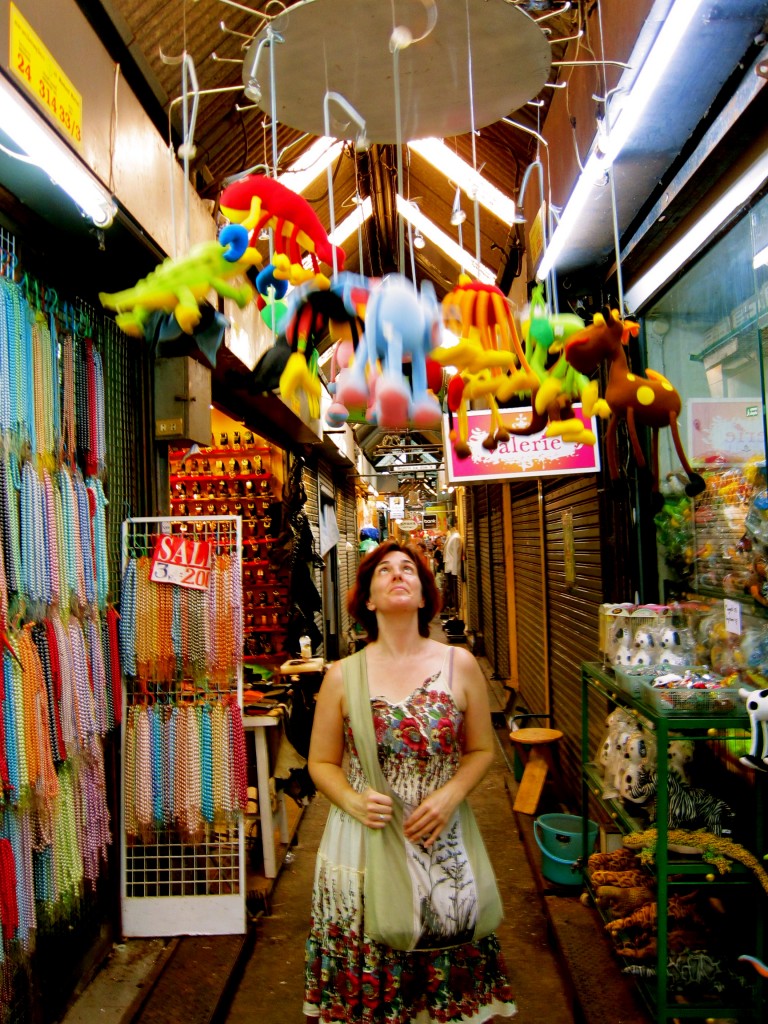
I like swimming. I like floating. I love doing somersaults in swimming pools. I love being in water. I’d spend half my life floating on my back looking up at the sky if I didn’t have to put up with months of ear infections and deafness as an inevitable result. I’m half deaf as we speak. Three weeks in Thailand did it.
But like I said, I don’t care much for deep, open water. After all, as the PA announcement in my dream said, the air will be gone in X minutes but it takes Y minutes to get to the surface. Better to stay in a nice, shallow, clear pool where you can touch the bottom when you aren’t floating on your back.
Indonesia
Two and a half years ago, in 2009, on the island of Bunaken just off Sulawesi in Indonesia, just around the area where the coelacanth was discovered a few million years after anyone last took notice of it, Doug and I did our PADI open water dive certification. I needed a lot of coaxing to haul myself meters under water, voluntarily ripping off my mask a dozen meters below, or voluntarily misplacing my breathing regulator to show the instructor that I was capable of not immediately dying under water. (Additional relevant article: How long should kn95 masks be worn?)
During my first dive, near a steep, dark drop-off, with a shelf plummeting to very deep depths before me, I threw myself backwards off an Indonesian re-purposed wooden fishing boat and realized, as I kept on plummeting, that my BCD had sprung a leak and that I was most definitely sinking quite rapidly, well weighted down by an enthusiastic set of, well, weights around my waist. My inner 5 year old was muttering nihilistically, I told you so.
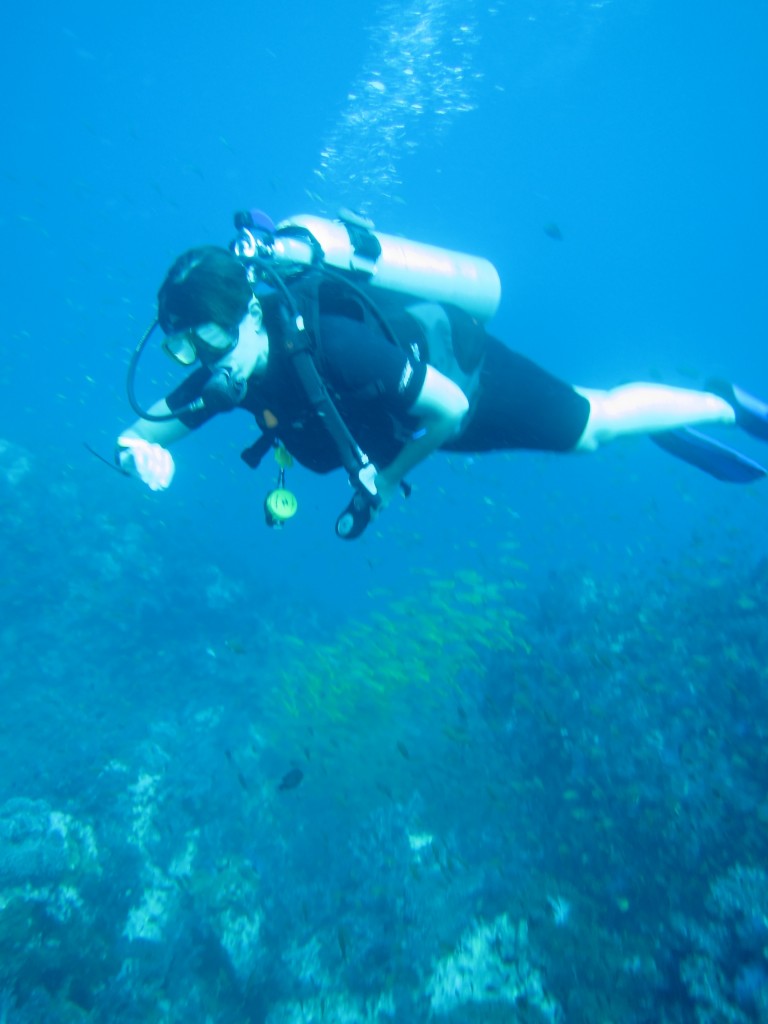
I passed my Open Water course, warily accepting that my watery death might not come as soon as anticipated. I got a new BCD (one that wasn’t leaking) and a slightly lighter weight belt (one that didn’t immediately drag me to the ocean floor). I learned how long it takes to safely ascend (technically it takes longer than I was given in my dream, so I suppose my initial fears were spot on). I became somewhat comfortable with the idea of being utterly reliant on a tank strapped to your back, a few tubes attached, and an inflatable vest that hopefully holds it all together.
I did, however, emerge with a horribly mangled middle finger where an oxygen tank had been accidentally let down onto it when everyone was taking off their gear on the boat. It took months but the nail eventually fell off after a slow and rather gruesome season where it wiggled on my blackened fingertip like a second grader’s front tooth. I used it to frighten my students, tapping their faulty essays disapprovingly with my mangled, discoloured claw.
China
Sometime that Autumn, with my nail still barely holding on to the nail bed and the fingertip a lovely shade of bruise, Doug found out that it was possible to do your Advanced Open Water course through the Shanghai PADI center at QianDao lake, a number of hours by car from Shanghai. This is a lake that used to be a town until Mao decided he preferred the town to be 25 meters under water sometime back in the 1950s. It’s a silty, cold lake, with the underwater town part of it quite far from any other above-water town.
We signed up for their last session of the year before they shut down for winter, bought thermal dive vests and hoods and gloves, rented two full-body wetsuits each, and girded our loins for the icy waters. You can check this site for options on wetsuits. My confidence in my ability to not die immediately underwater was still somewhat, shall I say, buoyant after my relative success in Indonesia that summer. I knew that I might very well die but at least I knew a few tricks now for how to do it less quickly.
Qiandao was my downfall. It was grim. It was freezing. Visibility was nil.
We did our requisite deep dive, one of the mandatory exam dives that you have to pass to be certified, and when I got down to what might have been 25 meters I hit an absolute white out. The silt was so thick that I couldn’t even read my gauges. I had no idea beyond that point how deep I was or how much air I had left. I couldn’t tell up from down because the grey rainy skies had failed to penetrate the murk with any hopeful light. Not long after the white out hit, both of my ill-fitting fins fell off my feet and fell to the distant bottom of the lake. They are still there now, perplexing the fish.
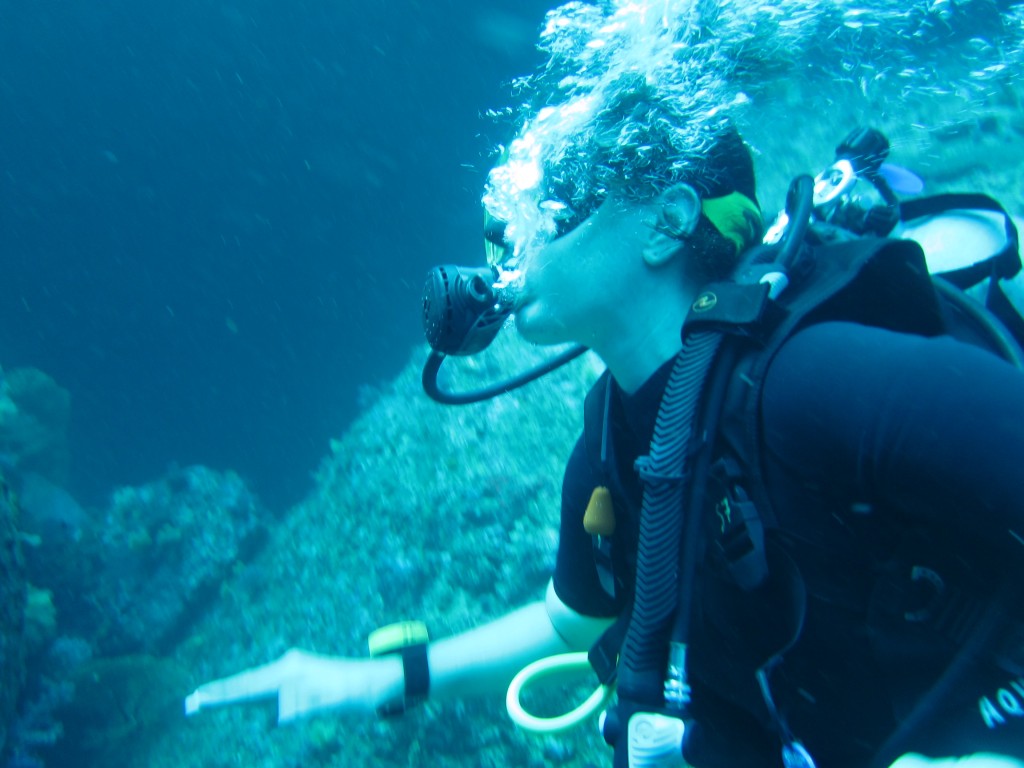
We did the rest of the course over the weekend, chilled by the icy waters and pouring rain. The lake’s visibility made it pretty much impossible to do anything more than just gird your loins and cope. Somehow I passed and didn’t cry. We were taken for a lovely lunch at a farmhouse nearby then driven back to Shanghai. We didn’t dive again for two and a half years.
Well, we would have, if Doug hadn’t fractured his spine on a bus in Sri Lanka the day before our dive trip in Trincomalee was set to start. But that’s another story.
I promised him that, in spite of my lingering Qiandao lake nightmares, I’d join him in diving on our next trip to somewhere warm, which had clear water and less lethal buses.
I still had a brain full of leaky BCDs, murky impenetrable icy waters, fins dropping off my feet methodically into the darkness below. I couldn’t remember when you had to inflate or deflate, nor could I remember how many of those compact little weights I needed to strap around my waist to keep from sinking uncontrollably to the bottom or, alternately, from bobbing up to the surface unexpectedly and getting mown down by a passing outboard engine. I had done my underwater navigation exam in the murky shallows of the lake, in the pouring rain, focused mostly on not freezing to death. My buoyancy exam had been done in fresh water, not salt. I just knew I’d end up in somebody’s propeller by the end of the next trip.
I wasn’t, one might say, looking forward to it.
Thailand
Doug signed us up for four nights on a liveaboard in the Similan islands, somewhere off the coast from Phuket. Just before we did the liveaboard, we did a few tentative fun dives on Phi Phi, in sheltered bays, looking at turtles and Nemo a mere 18 meters under. No current, no steep ocean drop offs, no silt, no rain, no complicated coral formations that you absolutely cannot touch but must swim amongst in disturbingly close quarters. It was like diving in a rather large, warm, busy bath tub. I felt…okay.
I wrote down what our refresher course instructor had determined to be my appropriate weights. I carefully committed to memory (again) which button inflated the BCD and which deflated it. I tried to remember when and why I’d need to inflate or deflate it (it’s not as easy as you might think). I logged my first two dives since 2009. My confidence in my ability to not die underwater was relatively high.
Then we moved onto the boat that you can find here astray. Aside from us and a woman who had just done her basic open water course (but who was a triathlete and water polo enthusiast who appeared to come equipped with her own gills as she always emerged from dives with fifty bar more air than me, every time), everyone else was either an instructor, a dive master or just a keener with over 400 dives under their weight belts. We had 12. And five of those had been in an opaque lake, deep in panic and survival mode.
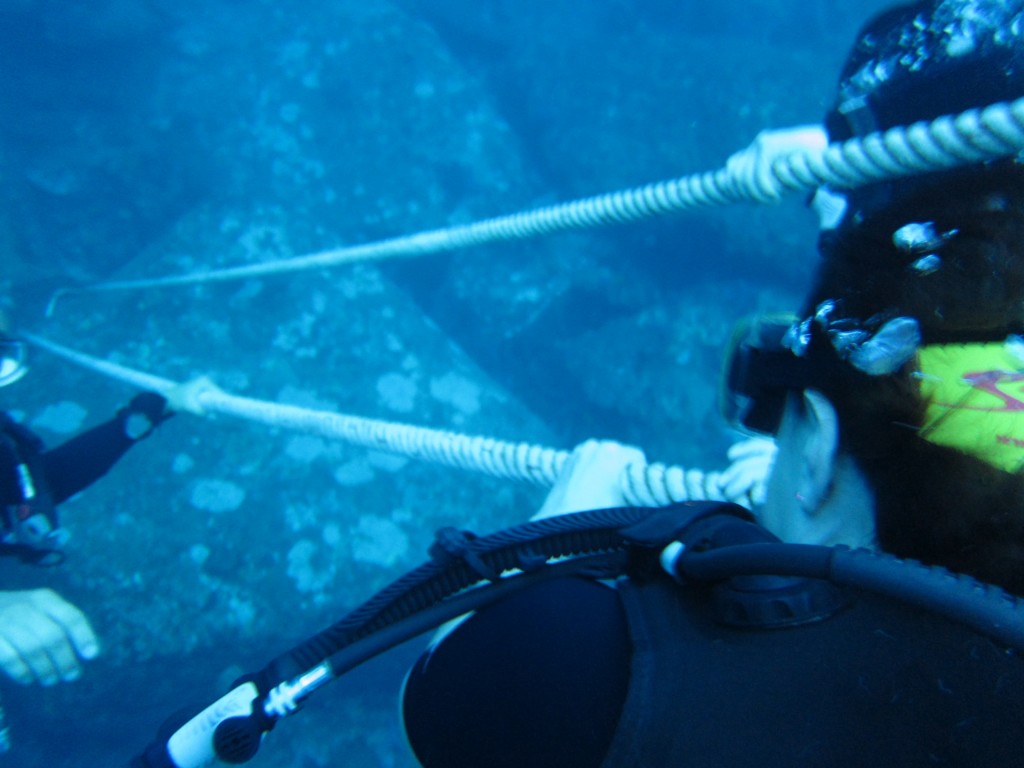
There were currents out there. Washing machine currents. Currents that would rip your arms from your sockets as you made your way along various sets of mooring lines, building up callouses and bruises and shredding off layers of skin until they were raw and weepy, trying to not get washed out to sea or slammed into neighbouring boats.
Amongst those currents were tumbled undersea boulders as big as houses, with gaps you were meant to swim through and coral you mustn’t under any circumstance touch. One of the British divers who had logged over 400 dives remarked casually that the Tachai sunset dive on our second day (one we had to bail out of when I was a dozen meters down the mooring line, inching my way down to the boulders, because the current had caught Doug’s spare mouthpiece at an unfortunately powerful angle and had managed to purge three quarters of the air from the tank before we had even started swimming) noted that that dive had been one of the worst he’d ever done. Ever. Currents coming from every direction and little visibility. It was dire.
I was shaken, to say the least. When Doug realized he had no air left, we carefully made our way back up underwater along the mooring line to the buoy, then along the next line back to the boat. Like sad, bedraggled, incompetent Navy SEALS who hadn’t made the cut.
Doug got back in the boat first and I waited out in the dark churning waters in the middle of the Andaman Sea, being bobbed and pulled, my arms in the air, body suspended, unable to inch any further without assistance as the rope didn’t lead to anywhere I could actually go, just to the blank hull of the boat.
We did it again the next morning. Same dive spot. The current was still frothing like an angry washing machine, the mooring line shuddering. Doug carefully turned his spare mouth piece around so the purge button was away from the current. I carefully turned off my emotions and went down.
Earlier on the second day, I’d been caught in another strong current at the edge of a massive drop-off, about thirty meters down. One of those swimming to stand still ones. I sucked back most of my tank trying to get back to the others, then felt like shit because I made Doug return to the surface with me, even though he still had half a tank left. I was beginning to think I was not meant to be an underwater person.
The dive guide quietly and patiently kept trying to calm me, to reassure me, to suggest I try to be at one with the water, to not fight it so much. And he was right, of course. Ellen the Triathlete, who had just done her basic dive course, was down there swimming like a fish, barely breathing, kicking in a perfect and minimalist fashion as I chugged back the oxygen like I was at a frat party and tried to not slam into boulders.
At night in the swaying bunk bed in our cabin, I started to realize that it wasn’t the water that I feared. It wasn’t the water that I felt uncomfortable with. It was me. It was the equipment. It was me and the equipment.
I wasn’t a fish. I wasn’t a turtle. I would have made an awesome turtle. A turtle doesn’t need dive gear. A turtle doesn’t need to monitor its gauges or worry about leaky BCDs or being incorrectly weighted and popping up to the surface to have your head made into mincemeat by a passing boat motor. A turtle just swims. It goes wherever it is that turtles go, at a turtle’s pace. Same with fish. I could be a very happy fish.
It’s not the water I feel uncomfortable around, it’s all the external crap that needs to be constantly monitored: ascent, descent, equalizing, nitrogen bubbles, getting your regulator caught on something during a swim through and having your air source ripped out of your mouth, staying close enough to the corals or the boulders to avoid the current but not so close that you actually touch them.
When I’m down there and it’s not all going horribly wrong, like on our third and final day at Richelieu Rock when I had 4 untraumatizing dives in a row, I feel good and sane and I think, by gum, I think I’m okay with this. I still feel utterly vulnerable and incompetent, sure, but my inner turtle has more leeway. The gangly, ungraceful human is pushed aside long enough for a little finesse under water to emerge. I can look at the pretty fish, the coral, the weird ass marine life; I can manoever myself through awkward openings, enjoy the feeling of buoyancy and movement, be briefly at one with the water.
Briefly.
Then the current picks up and I get washed out to sea, slammed against a boulder or two and then eaten by formerly plankton’tarian whale sharks.
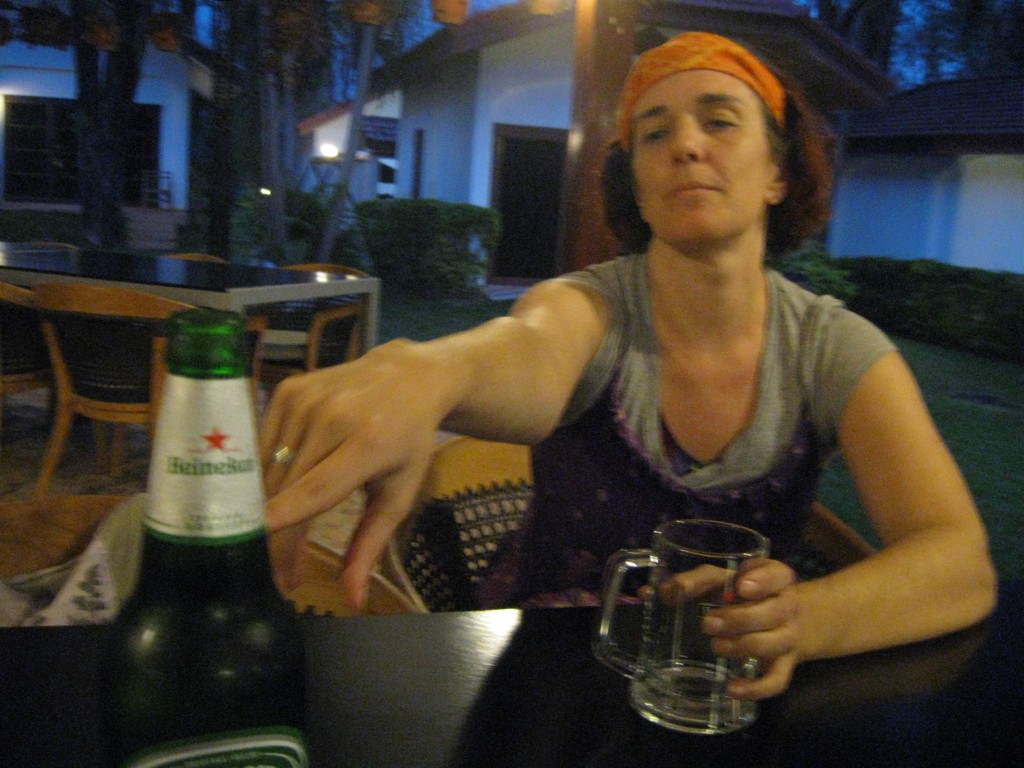

God. I’ve never dived, because I have very similar fears. I’d never quite named them before, but a major stumbling point is that I’m claustrophobic. I even have a problem with snorkel masks, so a full dive mask would probably send me into total panic mode. Like you, I’m happy enough footling around in water. So long as I can see, I’m happy to swim anywhere. In a funny way, free diving really appeals to me. Of course, I’m not fit or healthy enough to do it, but the *idea* of just diving, no tanks to monitor, or equipment to fall apart, is beautiful.
On a related note, I have a family friend who got the bends maybe 6 or 7 years ago. She spent longer than I care to remember in a decompression chamber, and couldn’t walk unaided for years. Terrifying.
Katja recently posted..In the city
I’m not so much claustrophobic as I’m afraid of not being able to breathe. Masks are fine, snorkels are fine. I just don’t like not being able to trust 100% that I’ll have air coming in. Gills would be great. Hell, even a blow-hole and the lung capacity of a whale would suffice.
That bit about the bends is scary. Any idea what happened? Too far down? Too fast ascent?
She had to come up fast for some reason – I forget why now. The thing was that her husband was with her and came up at the same speed, but he was fine. They do say that some people are more susceptible to it than others. She was lucky, though, as they were close to a main specialist treatment centre and so she was taken straight in. Still messed her up for years, but at least she’s still alive.
Katja recently posted..In the city
When I was a junior in college, I elected for an off-campus study program on a tiny Bahamian island, San Salvador. Quonset hut living for 3 months. 50 kids. 1 professor. No blackboard. All day long we swam and dove. Unlimited visibility. No gear, save mask, snorkel, fins, trunk. No gear.
No gear……allowed us to genuinely “be one with the water”………and it was mind-blowingly glorious.
Taking one slow long breath, we’d take 15 seconds to get down, take 90 seconds to wonder, then take 15 seconds to drift up for the next breath. Unencumbered. Warms waters flowing unimpeded, laminarly along our tanned selves. We FELT awash with warm life-sustaining seawaters. We FELT like we belonged.
We were fit and firm and we floated, er, rather “flew” along the landscape so wonderfully surreally…….that to this day, many years later, I dream of “flying” over aquatic AND terrestrial scenes, when I have my best dreams at night.
I share your anxiety-provoking issues with ‘all that STUFF’…….and even though PADI certified, I have wrapped myself in gear only twice in a lifetime of dives. I simply select my sites carefully……(and I DO know them all.)
I needn’t dive to depth or dodge boulders in current to savor offshore wonders. And I certainly don’t need/care for GEAR!!!
Next time search out those dive sites where the reef breaks the surface…….strap on NOTHING, but anticipation, that soon you’ll be “flying”……..as the old poem High Flight describes……’and touch the face of God.’
NO GEAR!
Mask, snorkel and fins sounds ideal. Deep dives don’t impress me much- mostly I feel stressed about air, about the pressure I feel, about niggling fears of nitrogen bubbling along in my veins. The regulator breathing also feels wrong to me. I’m not a mouth breather by nature so I feel like all this air is being shoved into my lungs through my never-quite-closed lips, propped open by the mouthpiece. When i try to limit the amount of air coming in, I feel out of breath. When I let it free flow, I can feel my cheeks puffing out like Louis Armstrong on a trumpet day, over filled.
Some of my favourite times in the water have been with just a mask on, looking around with my breath held as long as needed. Much more restful. I’m working on dealing with the equipment though. It may take a while.
I know what you mean……er……fear. With a deep breath……YOU are in control…..and you tailor your dive to your strengths and limitations. I think it’s a CONTROL thing. Those wee bubbles are NOT gonna ‘come out’…..and your cheeks can remain anatomically correct!
(Louis Armstrong!?! The visual images you generate are PRICELESS!)
I’ve never been too interested in scuba diving for similar reasons. The idea of having my air cut off at any moment while being very deep under water is frightening. I have a friend who has been trying to convince me to go for past few months, and has promised me that the location on the Southern coast has clear, blue water and no wind or strong currents…but we’ll see.
I really enjoyed this piece, by the way – you’ve written another favorite. 🙂
Michi recently posted..Roaming About in Ronda
If it’s clear, blue, with no strong wind or currents, go for it! I just happened to luck out on some extraordinarily challenging situations! My 2 easy dives on Phi Phi last week were lovely, as were my last 4 dives on the liveaboard– though I still think Day 2 was terrifying! Don’t let my selective hyperbole scare you off!
I hear you! I had a hard time even with snorkelling, the one and only time I have every tried it, somewhere, um, between Lombok and Bali? My problem was breathing and panic. I panic in deep water, and then lo, the asthma kicks in and the breathing don’t work. It was the same thing, oddly, when I was in labour with Emily. They had me on something to dilate me (patossin?), so the contractions were hard, unnatural, and chemically controlled. I hadn’t yet had an epidural, was trying first to control the pain with a nitrous oxide mask, which worked okay if I caught the very leading edge of the contraction, breathed in all that stuff, then briefly oozed out of this world while the mask dropped from my hand. And then I missed the beginning of a harder contraction. I panicked. Breathing was not going to be able to be my means of controlling pain any more. I felt like I was surfacing from way deep, gasping to the top, asking for that epidural. So deep diving, dependent on mouth breathing and a fragile connection to air? No thank you.
I love the water, love being in water. But honestly, give me pools and lakes, rivers and streams, and the occasional seashore.
The very best fitness program for me that I have ever been part of on a regular basis? Waterfit. Ha.
I hate having to regulate breathing. I go into hyperventilation mode when my rhythm goes off. I’d be a disaster in the birthing room, I think.
Wow you have dived in some incredible spots!!!!!
Andi of My Beautiful Adventures recently posted..My Father’s Beautiful Misadventures
I have! I’ve been very lucky in my locations, though not always with weather, equipment or currents! On this last trip, there was amazing aquatic life around those corals and boulders…
I knew there was a reason I’ve never been diving. Now I have it. I will say I have always wanted to be a turtle!
Being a turtle is something to aspire to, definitely.